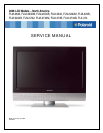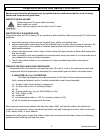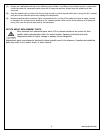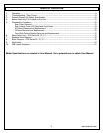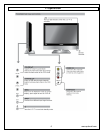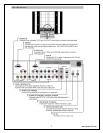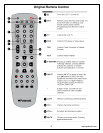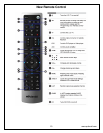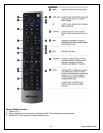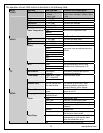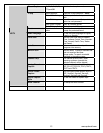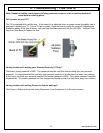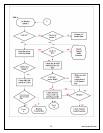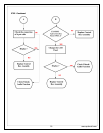
Important Service and Safety Information
Service work should be performed only by qualified service technicians familiar with all safety
checks and these service guidelines:
ELECTRIC SHOCK HAZARD
Always disconnect AC power before servicing!
Never modify any circuit!
Never insert any objects into the holes in the TV case!
ELECTROSTATIC DISCHARGE (ESD)
Components inside an LCD or plasma TV are sensitive to static electricity. Before servicing the TV, follow these
guidelines:
• Avoid static-causing surfaces such as carpeted floors, plastic, and packing foam.
• Remove replacement components from their antistatic bags only when you are ready to use them. Do
not lay components on the outside of antistatic bags because only the inside of the bags provide
electrostatic protection.
• Always hold components by their edges. Avoid touching the edge connectors. Never slide components
over any surface.
• Wear a grounding wrist strap (available at most electronics stores) and attach it to a bare metal part of
your workbench or other grounded connection.
• Touch a bare metal surface on your workbench or other grounded object before touching any
components.
PRECAUTIONS FOR USING LEAD-FREE SOLDER
Components within this television use lead-free solder (Sn-Ag-Cu). Look at the markings on board and
components within the television to determine the correct solder type and match to the table below:
5 LEAD-FREE (Pb-Free) CATEGORIES
The following categories are meant to describe the Pb-free 2nd level interconnect terminal
finish, component material, and/or the solder paste/solder used in board assembly:
e1 - SnAgCu (shall not be included in category e2)
e2 - Sn alloys with no Bi or Zn excluding SnAgCu
e3 - Sn
e4 - Precious metal (e.g., Ag, Au, NiPd, NiPdAu) (no Sn)
e5 - SnZn, SnZnx (no Bi)
e6 - contains Bi
e7 - low temperature solder (≤ 150 °C) containing Indium (no Bi)
e0, e8, e9 symbols are unassigned at this time.
When repairing components soldered with lead-free solder, ONLY use lead-free solder that matches the
symbol on the component. Using conventional lead solder may lead to damage or a short, which could result
in fire, electric shock, or other hazards.
Because the melting point of lead-free solder is higher than conventional lead solder, observe the following
guidelines when soldering with lead-free solder:
www.polaroid.com
3



